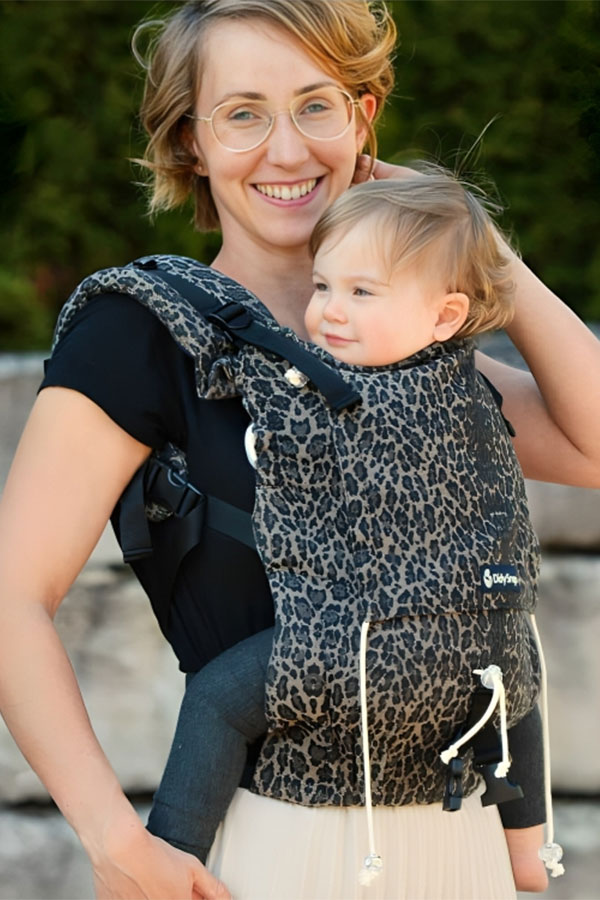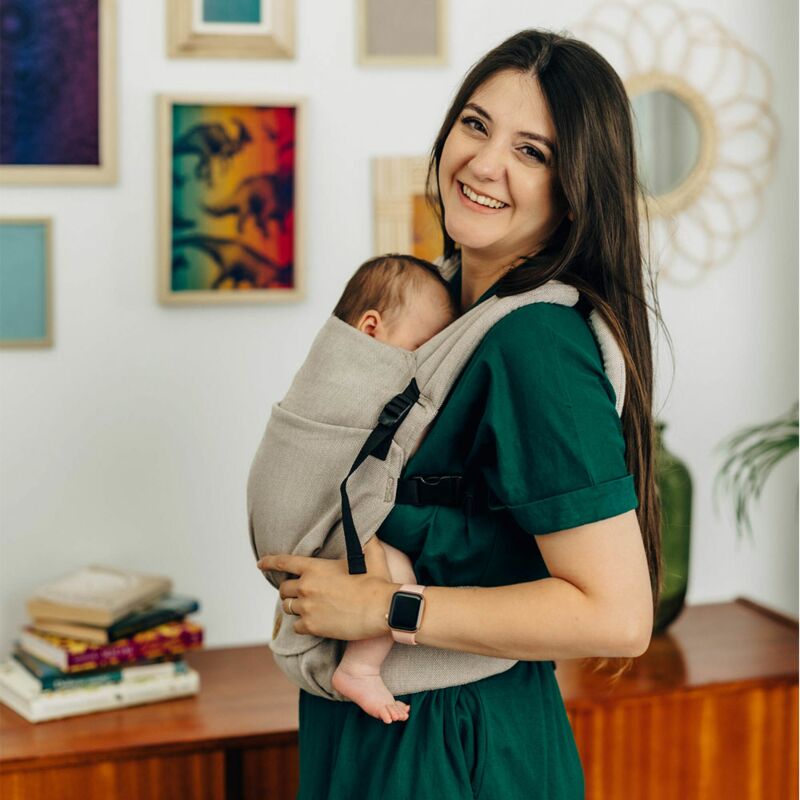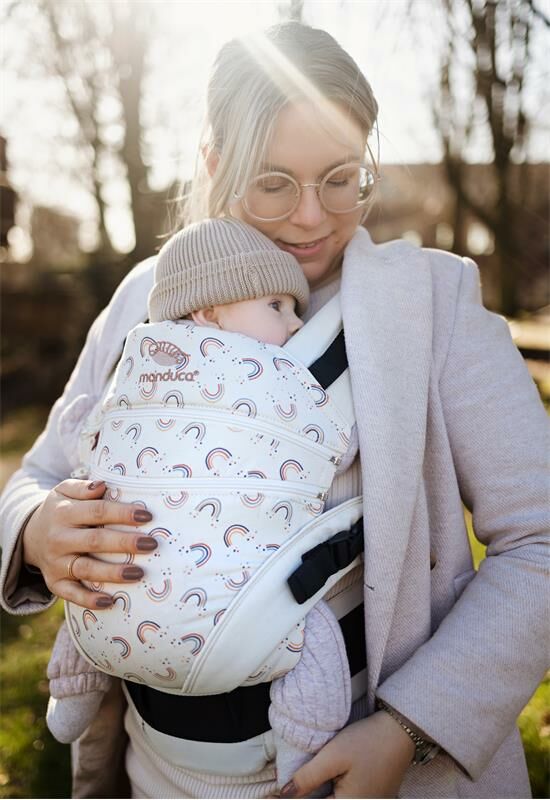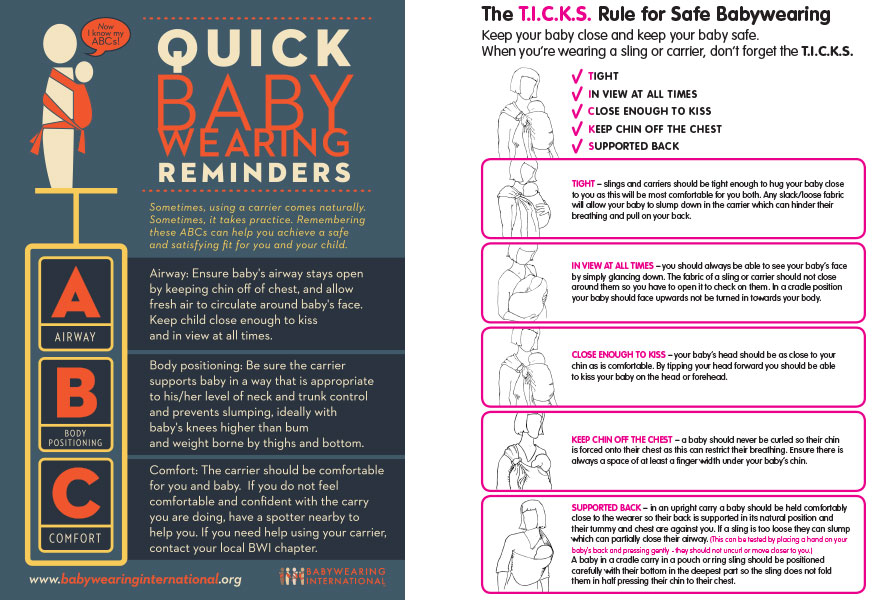Choosing a Buckle Carrier
![]()
by Beth Beaney, Executive Babywearing Consultant & Co-Founder, LTBN
Updated
Buckle carriers are great for babies and toddlers alike, and they're right and easy to use, too. But which should you buy for your little one? That's the million dollar question right there. Use this handy buying guide to make choosing your buckle carrier much easier.
What is a Buckle Carrier?
Much like asking why is the sky blue or why are we here, let's start with the fundamental task of explaining what a buckle carrier actually is, and how it differs from all the other types of baby carriers and slings available.
The basic design of a buckle carrier is a front panel, a padded waist strap and two padded shoulder straps, all of which are adjustable to achieve a comfortable fit, and secure with buckles.
Buckle carriers are supportive and baby can be worn on the front or back, sometimes on the hip too. They're probably the most popular design of carriers on account of how easy they are to use. Some can be used from newborn some can be used from 3-4 months upwards. With some designs, the shoulder straps can cross on the back to provide extra support.
Whilst the basic premise of each carrier from different manufacturers remains the same, they come in lots of different styles, fabrics and colours, so you'll find a design or colour you'll like.

What is the Best Buckle Carrier?
There isn't a best buckle carrier per se, although all of us have our favourites for sure. It's quite subjective, as the carrier one person finds comfortable or easy to use might not be for someone else. Ultimately, the best buckle carrier is one you find comfortable and love the look of too (you're much more likely to enjoy using a carrier you like!).
There are a few things to take into account. You can help to narrow your choice down by considering:
- your budget,
- your lifestyle,
- the age of your baby, and
- who will be using the carrier.
A really good buckle carrier will allow you to carry your little one in such a way as to be respectful of their[physiology. Their back should be soft, yet supported - not stiff or rigid. Their legs should be supported all the way along the thigh, to the knee pit, with heir bottom lower than their knees - traditionally, this is called the ‘spread squat position’ or ‘M’ position, but is often defined now as the ‘hip healthy position’. Baby's head should be free, clear and unobstructed.
Buckle carriers are versatile and relatively easy to learn. The basic design is a front panel, where baby is ‘seated’ in an upright position, a waist strap and two padded loop shoulder straps, all of which are adjustable to achieve a comfortable fit, and secured with buckles.
Buckle Carriers are very supportive and baby can be carried on your front or back, and sometimes on the hip too. Buckle carriers are probably the most popular design of baby carrier. Some carriers can be used from newborn, and some from around 3-4 months onwards. Toddler buckle carriers are growing in popularity and most can be used from around 18 months up to preschool age.
Although comprising a basic design, baby buckle carriers do vary slightly, mostly in terms of whether they are structured or unstructured. Most carriers are structured - in other words, the waist and shoulder areas are padded with either foam or firm padding. Examples of structured carriers include Tula Baby Carriers and Ergobaby Carriers.
Unstructured carriers are fewer in number, but are still very popular. They tend to have no padding in the waist section, and only very lightly padded shoulders (if at all).
With some designs, the shoulder straps can cross on the back to provide extra support (X-shape on the back). Other designs offer ‘rucksack-style-straps’, where the shoulder straps loop over the shoulders and under the arms, with a clip securing the straps either across your chest or back.

Buckle Carriers for Newborns
Newborn-suitable buckle carriers - one of the most often talked-about sling topics! Whether you like to use buckle carriers with a newborn or not, it's fair to say that they do, quite rightly, hold an appeal for many parents, and in the last few years there have been several new carriers produced which are really rather excellent.
Not all newborn buckle carriers will fit your newborn - they are all suitable ‘from’ newborn. However, as not all newborns are the same, a carrier that fits one may not fit another. They depend very much on factors other than just baby's weight, including dimensions, physiology and build.
The best buckle carrier for a newborn is one that fits them well, supports and respects their physiology and does so safely. It should be comfortable for you, and just your style - choose one that you really love the look of, as this way you're more likely to use it and enjoy using it!

Are Buckle Carriers Easy to Use?
The short answer is yes. Of all the different types of baby carriers, buckle carriers are amongst the most popular and easiest to use, and with good reason:
- they are relatively easy to use and learn;
- they tend to be gender neutral;
- they are highly adjustable; and
- they can easily be used by wearers of different builds and sizes.
The fact that buckle carriers are adjustable means that different care givers can use the same carrier - perhaps a petite mum, and a large-build dad, meaning that babywearing can be easily shared and enjoyed by both parents. Their ease of use means that Dads are more likely to 'take' to babywearing - guys are familiar with straps and buckles and are less likely to feel overwhelmed when putting baby in, and taking baby out of the carrier, particularly if they are on their own.
With only two buckles to snap - one at the waist, and one at the back (or chest if baby is being carried on the back), baby can be picked up and snuggled in the carrier in seconds - particularly helpful if baby is grumpy or upset.

Are Buckle Carriers Ergonomic?
Yes, buckle carriers are a hip-healthy baby carrier and the vast majority are accredited by the Hip Dysplasia Institute. Buckle carriers promote positioning which is respectful to baby, particularly to their physiology. But what does this actually mean?
A really good buckle carrier will allow you to carry your little one in such a way as to be respectful of their physiology. The cotton canvas panel and supportive straps allow baby's back to be soft and supported, not stiff or rigid. Their legs are be supported all the way along the thigh to the knee pit, with their bottom lower than their knees. Traditionally, this is called the ‘spread squat position’ or ‘M’ position, but is often defined now as the ‘hip healthy position’.

Are Buckle Carriers Safe to Use?
Carrying your baby in a sling is a beautiful way to bond and make a profoundly deep connection. There's nothing quite like having baby snuggled up next to you, and many babies find it calming and relaxing, and will fall asleep very quickly. It also enables you to get on with the everyday - whether it's negotiating with other children, or being able to have something to eat or drink, having your baby in a sling or carrier can make that all so much easier.
Carrying your baby or toddler in a sling is perfectly safe when practiced with common sense and understanding. As with all things in life a cupful of knowledge and a sprinkling of common sense is the best recipe to ensure happy, safe carrying for you and your little one. Always use a quality sling or carrier and ensure you carefully read the instructions on its use. As a highly trained and experienced Carrying Consultants, we can help answer any questions regarding sling safety that you have, and we're always happy to help you on your carrying journey.
Your buckle carrier should always be used according to the instructions, and the ABC and TICKS safety guides below. Always make sure your carrier is tied nice and snug to you; this should ensure baby is seated high (close enough to kiss) with their back soft, but very much supported. Once baby is in the carrier, look at their profile - it should be capital ‘J’ shaped (see photo below), and NOT ‘C’ shaped. Baby’s face should be visible and clear of the carrier.

How to Care for a Buckle Carrier
Guidelines vary between manufacturer, so here are our general washing guidelines:
- Spot clean when necessary and wash as seldom as possible - remember you'll be without it whilst it's drying.
- Use a non-bio, preferably eco liquid detergent; wash at 30C.
- Don't use softener, as it will make the fabric of the carrier slippy and may make it more difficult to use.
- Air dry.
Shop Buckle Carriers
I hope you found this article helpful. Please get in touch or email me - beth@lovetobenatural.co.uk - if you'd like any further info on buckle carriers or babywearing in general.
Beth Beaney is the Founder of and Executive Babywearing Consultant at LTBN. She's been a qualified babywearing consultant for 12 years, and has helped thousands of families of all needs carry their babies safely and comfortably. Find her on Twitter @lovetobenatural_LTBN
 5,467 Reviews
5,467 Reviews









